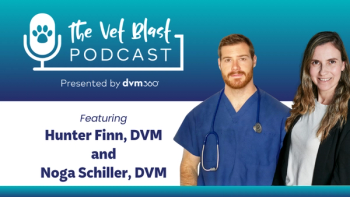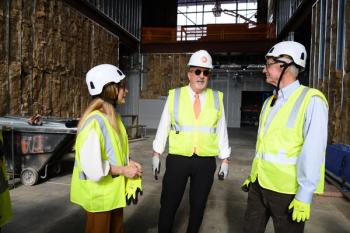
CSU investigates novel radiation drug technique
Fort Collins, Colo. - Colorado State University (CSU) researchers have developed a way to deliver intravenous radiation drugs to bone cancer patients without causing damage to other healthy cells and vital organs, drastically reducing illness and other common side effects of toxic radiation treatments, the university reports.
FORT COLLINS, COLO. — Colorado State University (CSU) researchers have developed a way to deliver intravenous radiation drugs to bone cancer patients without causing damage to other healthy cells and vital organs, drastically reducing illness and other common side effects of toxic radiation treatments, the university reports.
"The results of this study could change the standard of care for bone cancer patients — humans and dogs," says Dr. Nicole Ehrhart, a veterinary oncologist at CSU's veterinary college.
The technique also allows doctors to deliver radiation in only one dose in a higher, more effective concentration.
By isolating and separating circulating blood to the area of the tumor through a heart-lung machine while delivering radioactive drugs, doctors at the university's Animal Cancer Center deliver higher radiation doses to only the tumor while protecting vital organs and healthy tissues.
The doctors are working to pinpoint a dose that will achieve 90 percent or higher tumor kill in their canine patients; the goal for traditional treatments in people also is 90 percent tumor die-off before surgery.
"While most osteosarcoma patients don't receive radiation treatment," Earhart says, "we believe that, when delivered with this method that allows doctors to isolate the dose to the tumor, radiation treatment is very effective. In dogs, we know that using radiation in combination with chemotherapy increases our success over just one or the other treatments used alone."
The technique also allows clinicians the potential to add other drugs to bone tumor treatment that may typically be avoided because of their toxicity when applied to the entire body.
At the Animal Cancer Center, Ehrhart and other researchers have isolated the blood supply to a limb using special catheters and tourniquets, and circulated blood from that limb through a heart-lung machine. The radiation drug is delivered into the isolated blood supply, saving the healthy bone marrow in the rest of the patient's body from exposure to radiation. Once the radiation drugs reach the tumor, it is flushed from the system and the heart-lung machine is removed, allowing normal blood flow to return.
Results of the study show that because the technique allows higher doses of radiation directly to tumors, the dogs, who are patients at the Animal Cancer Center and participate in the study with their owners' consent, have few side effects, and early results show that the tumor die-off is significant.
The study uses a radiation drug called samarium, which is mixed with a special substance that causes the radioactive drug to bind to mineral in bones. The sticky substance allows the radiation to release into bone tumors. The benefit of the drug is that it is attracted to bone tumors because these tumors help spur bone growth at a more active rate. The drawback is the substance does adhere to healthy bone as well, causing damage to healthy tissue.
Bone cancer is a common diagnosis in large dogs and humans, particularly in children. Colorado State's Animal Cancer Center diagnoses and cares for 150 new cases of canine osteosarcoma every year. Typical treatment is removing the tumor and replacing the bone with a rod or amputating the limb. Most patients received chemotherapy before and after surgery to prevent the cancer from spreading.
Children who receive samarium treatment to their entire body often must have bone marrow transplants because of the extensive damage the radiation does to healthy bone marrow. Radiation therapy is typically not a standard treatment for people with osteosarcoma because of its toxic side effects, but it can kill tumor growth, stall progression and improve quality of life.
The study is funded by M.D. Anderson Cancer Center, the Limb Preservation Foundation in Denver and the Animal Cancer Center.
Newsletter
From exam room tips to practice management insights, get trusted veterinary news delivered straight to your inbox—subscribe to dvm360.





